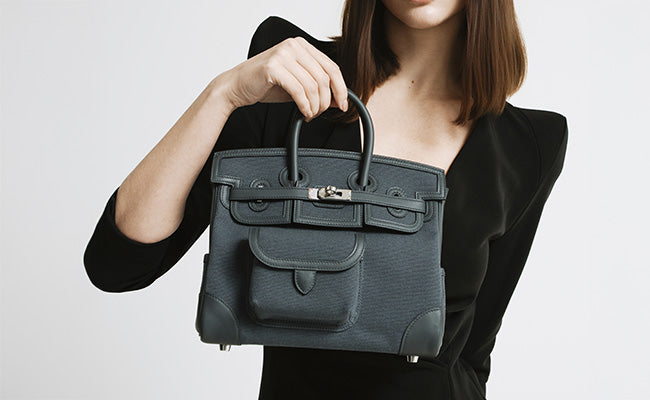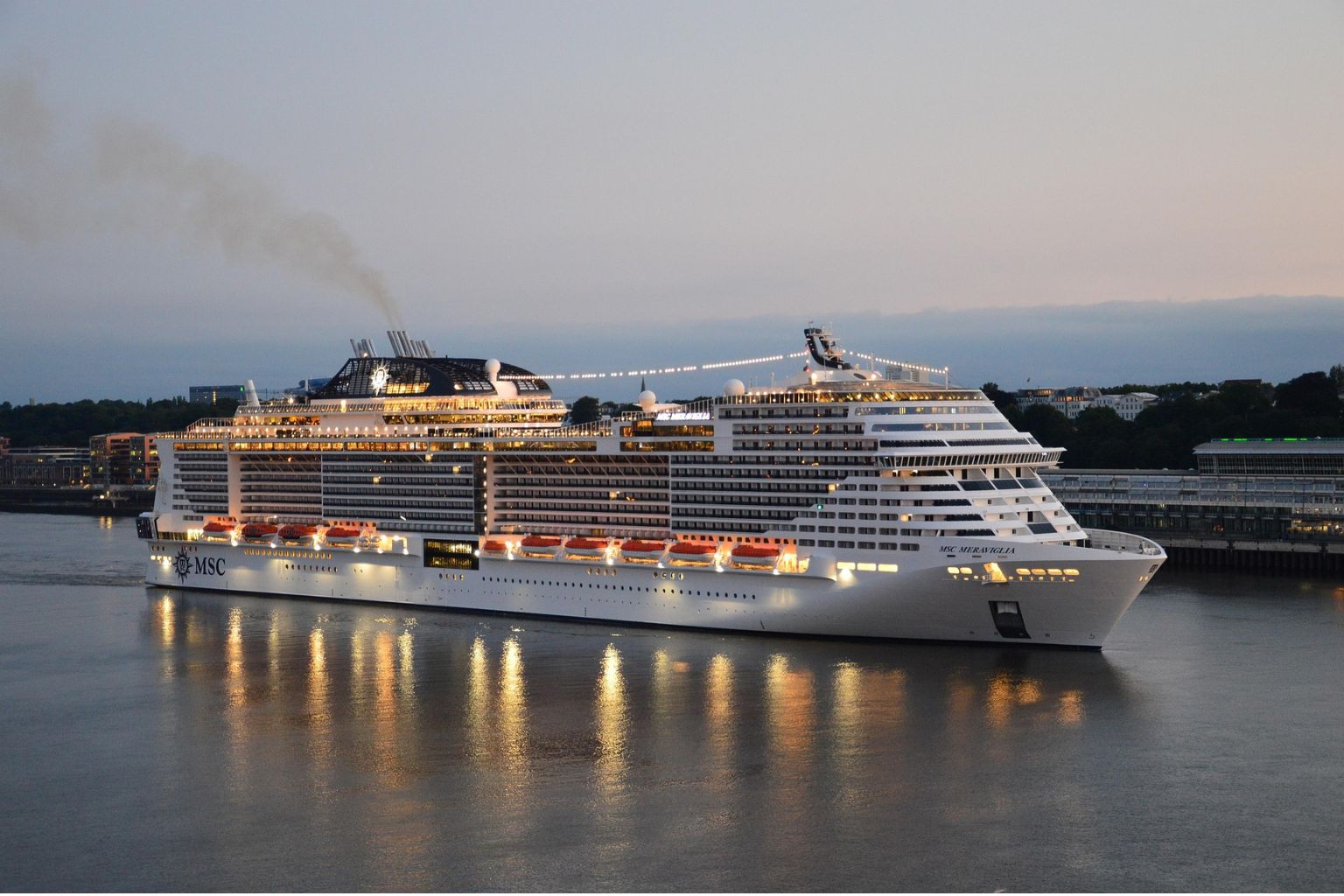
Weight by Leather: How Material Choice Changes Daily Comfort
Check out our Hermès collection and Birkin bags!
When we flop into our favorite chair after a long day, we rarely pause to wonder why some furniture feels instantly luxurious while others leave us fidgeting.
The secret? It’s often the weight of the materials, something most of us barely notice, yet it can totally reshape our comfort experience. Just like we might weigh a Birkin bag in our hands before splurging, maybe we should give our living spaces the same level of scrutiny.
Leather's weight really changes how supported and comfortable we feel. Heavier leather doesn’t just look premium, it performs better, offering that satisfying, substantial comfort that makes you want to linger.
Lighter materials might make moving furniture less of a hassle, but they often lack that reassuring heft that screams quality.
Most of us know the difference between a solid leather sofa and a flimsy fabric one. The weight of good materials forms the backbone of comfort. It’s not just about how it feels physically, it’s about how it shapes our environment and reflects our taste for excellence.
Key Takeaways
- Heavier leather usually means more support and stability, which is great for daily use
- The weight of your furniture’s materials affects both how long it lasts and how luxurious your space feels
- Picking the right material weight is a balancing act, comfort, looks, and maintenance all play a part
Understanding Material Weight: Why It Matters in Everyday Comfort
The weight of leather changes how a piece feels against your skin and how it holds up day after day. A 2-ounce leather wallet is nothing like an 8-ounce leather belt, and these differences sneak into our daily comfort in ways we might not even notice.
What Determines the Weight of Leather
Leather weight boils down to a few big factors. First, the tanning method, vegetable-tanned leather (think Hermès) is denser and heavier than chrome-tanned stuff.
Then there’s leather type. Full-grain leather, with all its natural fibers intact, packs more weight than split leather, even if they’re the same thickness. That’s why real luxury pieces just feel more substantial.
Finishing processes matter too. All those oils, waxes, and dyes that make luxury leather gleam? They add to the final weight. A heavily finished hide might be 20-30% heavier than raw leather.
Thickness and weight are related but not identical. We measure weight in ounces per square foot, thickness in millimeters. Dense leather can be thin yet surprisingly heavy.
How Weight Influences Furniture Feel
When you sink into a leather sofa, the material’s weight changes everything. Heavy leather (8-10 oz) creates that rich, substantial feeling we crave in high-end furniture, it drapes nicely and gets better with age.
Lighter leather (4-6 oz) is more flexible but can feel less impressive. It’s easier to work with during production but might not age as gracefully. There’s nothing quite as disappointing as furniture that feels insubstantial.
Temperature regulation is different, too. Heavier leather holds body heat longer, cozy in winter, maybe a bit much in summer. Lighter leather breathes better, but you might miss that enveloping feel.
Structural support varies a lot. Heavy leather keeps its shape for years, while lighter options might start to sag or show wear sooner.
Comparing Leather and Fabric by Grams
Knowing the weight differences helps us choose wisely. Here’s a quick comparison:
| Material Type | Weight Range (GSM) | Feel Characteristics |
|---|---|---|
| Premium Leather | 1000-3000 GSM | Substantial, luxurious |
| Standard Fabric | 200-600 GSM | Light, breathable |
| Heavy Upholstery | 400-800 GSM | Durable, structured |
Leather outweighs fabric by a lot. A typical Hermès leather handbag is 800-1200 grams empty; a similar fabric bag is just 200-300 grams.
This weight difference really affects daily usability. That gorgeous leather jacket feels incredible, but you’ll notice the extra weight. Is the premium feel worth the heft? That’s up to you.
Durability often tracks with weight. Heavier leather pieces usually last for decades if you take care of them, making the initial heaviness a fair trade-off.
Leather Varieties and Their Weight Profiles
Different leathers have their own weight personalities, and that changes how your favorite luxury pieces feel day to day. Processing methods and grain structure both make a real difference in heft and thickness.
Full Grain vs. Top Grain Leather: Heft and Luxury
Full grain leather keeps the whole hide surface, natural grain and all. It’s denser, typically weighing 8-12 ounces per square foot (3.2-4.8mm thick).
You notice this right away when you pick up a full grain Hermès Kelly or Birkin. The weight comes from not shaving away any layers.
Top grain leather gets sanded or buffed on the surface, trimming it down to about 6-9 ounces per square foot (2.4-3.6mm).
That makes top grain pieces lighter and maybe a bit easier to carry or wear for long stretches. But you do lose some of the durability and character.
Weight Comparison:
- Full grain: Heavier, more structure
- Top grain: Lighter, more flexibility
Aniline, Semi-Aniline, and Corrected Leather Differences
Aniline leather gets transparent dye only, keeping its natural thickness. These usually weigh 7-10 ounces per square foot.
We love that aniline treatments skip heavy coatings. The result feels genuine and substantial, never plasticky.
Semi-aniline leather adds a light surface treatment, bumping the weight just a bit, 7-11 ounces per square foot.
Corrected leather gets the most processing, with lots of pigments and protective layers. That can push the weight up to 9-13 ounces per square foot.
All those coatings make for a more uniform feel, but you lose some of the natural touch and character that makes luxury leather so appealing.
Fabric Sofas vs. Leather Sofas: Weight and Comfort Showdown
Material choice totally changes how we live with our sofas, from moving them for cleaning to the way they feel during a long movie night. The weight difference between fabric and leather sofas shapes everything from delivery day to daily use.
Daily Handling: Moving and Rearranging Sofas
Fabric sofas usually weigh less, thanks to lighter upholstery and simpler frames. You can often slide a fabric sectional around without much effort.
Most fabric sofas come in at 70-120 pounds for a standard three-seater. Rearranging furniture on a whim? Totally doable.
Leather sofas are heavier, with denser materials and beefier frames to support the load. Expect 90-150 pounds for similar sizes.
This extra weight matters when:
- You’re rearranging for the season
- Deep cleaning behind the sofa
- Redecorating the room
Leather’s heft means you’ll probably need help moving it. Fabric sofas give you more flexibility if you like switching things up.
How Weight Affects Sofas During Use
Heavier leather sofas offer better stability. They don’t budge when you plop down or when guests get rowdy. The sofa stays put.
That stability means consistent comfort. No need to keep pushing the sofa back or fixing the cushions every time someone sits down.
Fabric sofas have their own perks:
- Less pressure on floors, so fewer dents
- Easier to fluff cushions and keep things tidy
- A more responsive, softer feel, some people actually prefer this
The downside? Lighter fabric sofas might slide around during movie marathons or shift on slick floors.
Weight distribution plays into how long your sofa stays comfy. Heavy leather usually means reinforced frames that hold shape for years, while lighter fabric sofas can start to sag sooner.
Material Choice and Its Influence on Luxury Daily Living
The weight and quality of leather you pick for your home changes how you live with it every day. Heavier, premium leather transforms a room, while lighter options offer practical perks for busy families.
How Leather Weight Impacts Room Presence
Walk into a room with serious leather furniture, and you can feel the difference. Full-grain leather sofas and chairs have a physical and visual weight that synthetic stuff just can’t match.
Designers talk about “gravitational pull”, your eyes go straight to those substantial pieces. A thick leather Chesterfield can weigh 40-60% more than a fabric one, and it shows.
The weight even changes the sound in a room. Dense leather absorbs noise differently, creating more private-feeling spaces. In open-concept homes, that extra mass helps define areas without walls.
Patina develops best on heavier leathers. Those natural oils and wear patterns only get better with time, giving the piece a story that lighter, processed leathers just can’t tell.
Practicality in Family and Entertaining Spaces
Heavy leather takes some planning in active households. You can’t just rearrange on a whim, it’s a commitment.
For entertaining, though, that permanence is a plus. Guests treat quality leather with more care. Spills get cleaned up fast, not ignored.
Maintenance is different, too. Heavier leather often comes with better protective finishes, so you don’t have to condition as often. Maybe once a season, instead of every month like lighter leathers.
Temperature changes matter. Heavy leather stays cool in summer but takes a while to warm up in winter, which can affect comfort during long gatherings.
Child-friendly? Heavier pieces are harder for kids to move or tip, but sticky hands and crayons mean you’ll be cleaning more often.
Maintenance, Durability, and How Weight Plays a Part
Weight affects more than just how comfy your leather is, it changes how you clean it and how long it lasts. Heavier leather needs a different approach, but usually rewards you with extra years of good looks.
Cleaning and Moving Heavy Vs. Lightweight Upholstery
Trying to vacuum under a massive leather sectional? It’s a workout. Heavy leather furniture brings its own set of cleaning challenges.
Cleaning by Weight:
- Heavy pieces (35+ kg): Usually need two people to do a thorough job
- Lightweight leather (under 20 kg): Solo cleaning is realistic
- Full-grain leather’s heft makes deep conditioning a longer process
Moving heavy leather for cleaning is tough. Sometimes we just skip under it, and dust builds up.
Lighter leather is easier to shift and clean around, but you’re trading away some thickness and durability for that convenience.
How Often to Clean:
- Heavy leather: Spot clean monthly, deep clean every few months
- Medium weight: Can handle bi-weekly maintenance
- Lightweight: Weekly cleaning is doable
Fabric sofas are lighter but need different cleaning routines altogether.
Long-Term Wear: Sagging, Pilling, and Firmness
Weight tells the real story of how long leather lasts. Heavier leather holds its shape much longer, while lighter options can start showing wear fast.
Durability by Weight:
| Weight Category | Sagging Timeline | Firmness Retention |
|---|---|---|
| Heavy (35+ kg) | 5-10 years | Excellent |
| Medium (20-35 kg) | 3-5 years | Good |
| Light (<20 kg) | 1-3 years | Fair |
Dense, heavy leather resists sagging and holds up under pressure. Lighter leather, especially in high-traffic spots, softens and deforms much faster.
Fabric sofas are a different story altogether, their weight comes from the frame, not the upholstery, so their durability depends on other factors.
Maintenance and Longevity:
- Heavy leather: Less frequent conditioning needed
- Light leather: Needs more regular care to avoid wearing out
- Both need good support to last
Investing in heavier leather pays off with fewer replacements and a better look, decade after decade.
Personal Style and Interior Aesthetics: Choosing for Both Comfort and Status
What we put in our homes says a lot about us. Heavier luxury pieces often turn into statement items that blend comfort with a sense of status.
Statement Pieces: The Role of Heavier Luxury Items
When you buy substantial furniture, you’re making a choice that affects both daily comfort and how your space looks. A solid leather sectional or a chunky wood dining table has a presence that lighter pieces just can’t fake.
Material density isn’t just about durability, it changes the whole vibe. Dense woods like walnut or mahogany steady a room, while full-grain leather develops a patina that tells its own story.
Heavier pieces anchor a space. A big teak coffee table or a leather ottoman with real filling grounds a room in a way light furniture rarely does.
And let’s be honest, the tactile experience matters. Running your hand over genuine leather or solid wood, you just know it’s going to last. That weight feels reassuring, a quiet promise of quality and craftsmanship.
When Weight Communicates Value and Timelessness
There's just something about physical heft that makes an object feel more valuable. For luxury goods, that satisfying weight often hints at authenticity and solid construction. Over time, we've come to link a substantial feel with better materials and careful craftsmanship.
Leather furniture really drives this point home. Top-grain leather takes a lot of work and the right hides, so it ends up feeling both sturdy and soft. Cheaper options? They can feel oddly hollow or too light, almost like something’s missing.
Some classic signs of quality weight:
- Solid wood frames instead of engineered stuff
- Full-grain leather over corrected or split grains
- Metal hardware rather than plastic
- Natural fillings instead of synthetics
Luxury brands know exactly what they're doing when they pick hefty materials. It’s not random, they want their pieces to feel like they’ll last, like they matter. Lighter knock-offs just can't fake that sense of permanence.
Honestly, the psychological side is huge. Pick up something heavy and your brain just goes, “Yeah, this is worth it.” That feeling sticks with you, shaping how happy you are with your purchase long after you bring it home.
Frequently Asked Questions
Leather weight isn’t just about looks, it changes everything from how long your bag lasts to how comfortable it is to carry. What you choose really affects your posture, how much upkeep you’ll need, and just the whole experience of owning a high-end leather piece.
How does the choice of leather affect the wear and tear of a high-end bag?
Full-grain leather, like the kind you see on those Hermès classics, ages beautifully. Instead of getting worn out, it develops a patina that just gets better. The dense fibers shrug off scratches and scuffs that would wreck cheaper stuff.
If you go for heavier leathers (think 8-10 oz), your structured bags will stay in shape, even if you load them up every day.
Chrome-tanned leather bends more easily but can show wear sooner than vegetable-tanned. On the plus side, it tends to resist water and stains better.
Natural grain hides little scratches better than super-smooth finishes. So, if you want a bag that doesn’t look beat up fast, that’s something to keep in mind.
Can the weight of the leather influence the day-to-day practicality of a designer tote?
Oh, for sure. A heavy leather tote can tack on an extra 500-800 grams before you put anything in it.
Once you add a laptop or a stack of books, you’ll definitely feel it. By mid-afternoon, your shoulders might be begging for mercy.
Lighter leathers (2-4 oz) make totes easier to carry, but sometimes they feel floppy or lack that sharp, structured look.
Handle design matters, too. Thicker leather handles spread the weight but can feel chunky. It's a trade-off between comfort and style, honestly.
What's the real-deal scoop on leather types and their impact on your posture when toting around that chic purse?
Heavier bags will pull your shoulder down and forward, no question. That can lead to neck tension and some annoying shoulder issues if you carry them all the time.
Structured bags keep their shape but focus the weight in one spot. Softer leathers let things shift around, which sometimes helps balance things out.
Cross-body straps? Lifesavers. They spread the weight better than a single shoulder strap. And the thickness of the leather makes a difference, thin straps can dig in, while thick ones might feel bulky.
Honestly, it's smart to switch shoulders throughout the day. Even the fanciest bag can leave you sore if you always carry it on the same side.
Do different leathers require unique care to maintain that luxe, supple feel?
Vegetable-tanned leather is thirsty, it needs regular conditioning so it doesn't dry out or crack. With some love, it’ll soak up oils and develop that awesome patina.
Chrome-tanned leather needs less fuss, but a quick clean now and then helps. It shrugs off moisture and stains better, which is great if you’re forgetful about care.
Exotics like crocodile or ostrich? They’re high-maintenance. Regular products can ruin them, so you need to use stuff made specifically for those leathers.
How you store your pieces matters, too. Dust bags are your friend. Skip plastic covers, they trap moisture and can mess things up.
When it comes to switching up materials, how does it alter the overall vibe and swagger of your statement piece?
Thick, structured leather just oozes authority. Think of a Birkin or Kelly, those bags own any room they’re in.
Soft, slouchy leathers give off a more relaxed, effortless vibe. Perfect for brunch or a casual day out, but still undeniably luxe.
Matte leathers feel subtle; glossy ones shout for attention. Your choice totally changes how much your bag pops in public.
And, weirdly enough, the weight changes how you move. Heavier bags make you walk with more purpose. Maybe that’s why they feel so confidence-boosting?
Is there a noticeable difference in comfort when alternating between lightweight and heavyweight leather goods?
Oh, absolutely, you notice it right away. Swapping a heavy leather bag for something lighter is like shrugging off a thick winter coat you didn’t realize was dragging you down.
Bag weight actually messes with your posture all day. With a lighter bag, you just move easier, more like yourself.
But let’s be real: some folks genuinely like the heft of a solid leather bag. There’s a reassuring, almost old-school vibe to it that lighter stuff just doesn’t deliver.
Honestly, it comes down to what you’re up to. Heavy leather? Great for a quick outing. But if you’re in for a long haul, that featherweight option starts looking pretty good.




